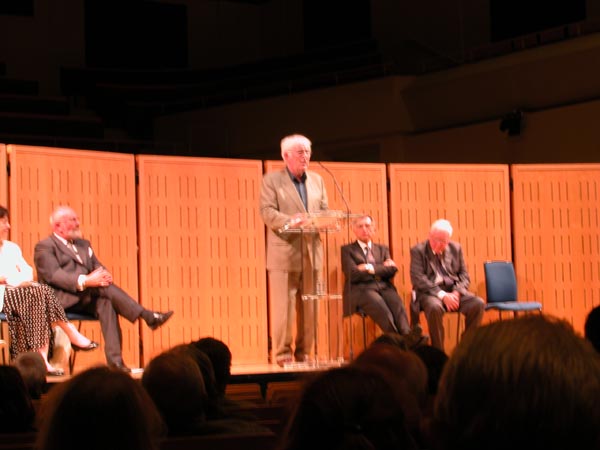The
Context and Development of Irish Literature:
History, Poetry, Landscape
Ireland in
the 21st Century
The social and
cultural life in the Republic of Ireland from the 1980's to the
present day has seen remarkable transformations. There has
been an opening up of Irish society in many ways, as Ireland
comes to share with the rest of Europe many cultural and
economic features. The entry into the European Community
in 1973, and subsequent membership in the European Union
established in 1993, set this in motion. In 2002 Ireland
adopted the Euro as its standard of currency, replacing the old
Irish Punt or Pound. During this time the power and sway
of the Catholic Church has declined remarkably--its special
place in the constitution was removed by referendum in 1972, and
its teachings on divorce, abortion, and other social issues have
been challenged by new laws and liberties. Women have much
greater freedom in education and the workplace (the old law that
required a woman to leave a civil service position upon marriage
was abolished in 1977). As changes took place in such
previously unchanging entities as the family and the church, the
question became, as Terence Brown has phrased it, "how much
Ireland's traditional identity could be retained in the new
circumstances?"
New writers emerged
during this time: in poetry, Nobel laureate Seamus Heaney
began writing in 1966 and continues to produce work to this day;
 he
is joined by many prominent poets, such as Brendan Kennelly,
John Montague, Mary O'Malley, Nuala Ni Dhomhnaill, Eavan Boland,
Derek Mahon, Paul Muldoon, and many others. Irish drama
found new voices in Brian Friel, Martin McDonagh, Tom Murphy,
and Frank McGuinness. And the Irish novel flourished in
such writers as Edna O'Brien, John McGahern, and Jamie O'Neill.
In the visual arts, the Irish Museum of Modern Art (IMMA) opened
in 1991 and exhibits contemporary art. A frankness of
theme, subject matter, and language is enjoyed today that Joyce
could not have imagined. he
is joined by many prominent poets, such as Brendan Kennelly,
John Montague, Mary O'Malley, Nuala Ni Dhomhnaill, Eavan Boland,
Derek Mahon, Paul Muldoon, and many others. Irish drama
found new voices in Brian Friel, Martin McDonagh, Tom Murphy,
and Frank McGuinness. And the Irish novel flourished in
such writers as Edna O'Brien, John McGahern, and Jamie O'Neill.
In the visual arts, the Irish Museum of Modern Art (IMMA) opened
in 1991 and exhibits contemporary art. A frankness of
theme, subject matter, and language is enjoyed today that Joyce
could not have imagined.
Seamus
Heaney speaking at the International James Joyce Symposium,
Dublin 2004
Economically, a
general practice, begun in the late 1970's by Fianna Fail, to
attract foreign investment to Ireland began to pay dividends
beginning in the early 1990's. The 1980's were a time of
grim recession in Ireland, with corresponding rises in
unemployment, crime, drug abuse, and urban decay. Yet the
modernized educational system was producing remarkably
well-educated work force that foreign investment would quickly
capitalize on, so that by the late 1990's and early 2000's
Ireland's economy would be one of the most robust in all of
Europe, making it a model for the small EU nation to emulate.
As of this writing,
late March of 2010, Ireland's economy has receded dramatically
from the heyday of the "Celtic Tiger" of the early 21st century.
The world-wide recession, and in particular the decline in the
real estate market which fed much of Ireland's economic
resurgence, has hit the country particularly hard.
Unemployment is nearing 15%, the Waterford Crystal factory has
been closed and its labor out-sourced, and in 2009 the economy
contracted at a record pace. Yet to some the
economic decline brings its good side, too: travel writer
Rick Steves reports of his Irish friends that they say that "now
they can stop racing after big profits and savor the blessings
of just being Irish."
The "new" Abbey Theatre, completed in 1966, on the same site
as the original theatre founded by Yeats and Gregory in 1903.
In 2010 the Abbey will relocate to a new location on George's
Dock.
|